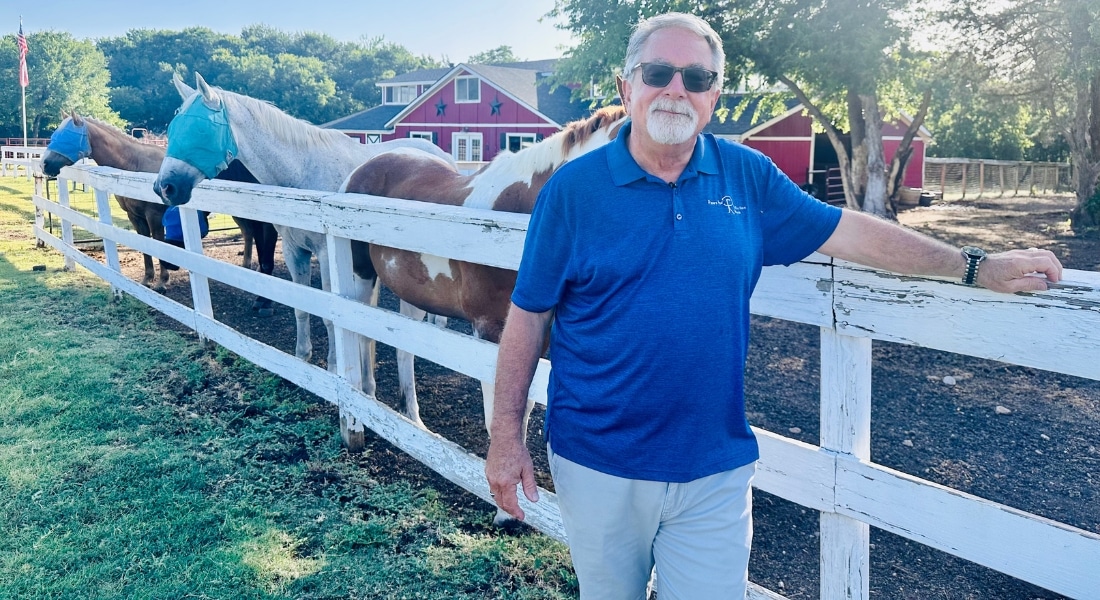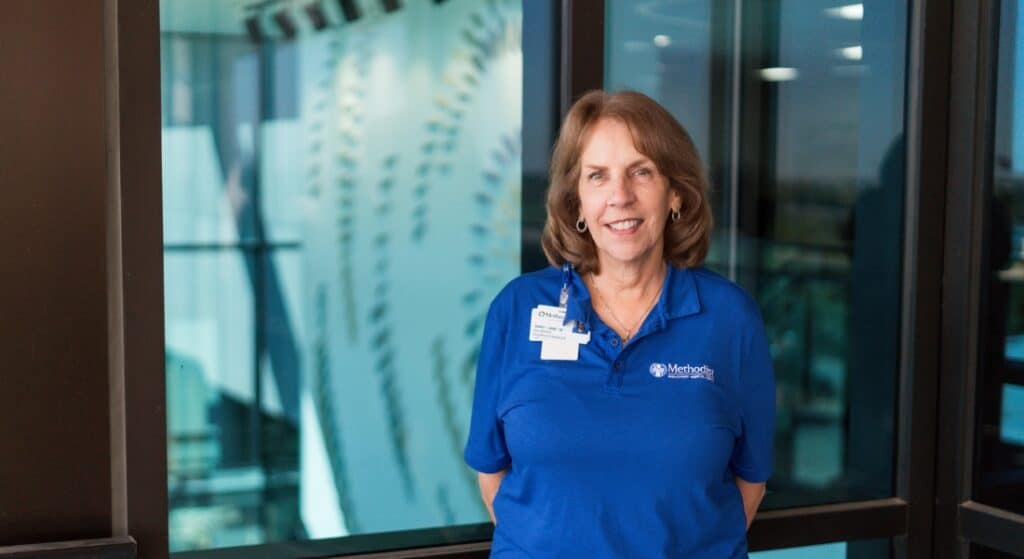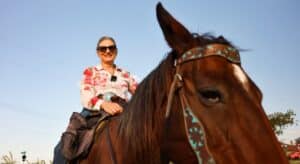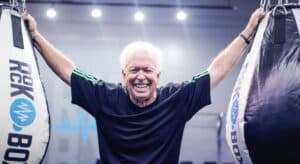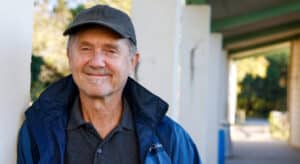Retired healthcare executive Stan Seremet earned a new nickname after having both hips replaced this year at Methodist Midlothian Medical Center.
“My friends and family call me Bionic Stan instead of the Bionic Man,” he says. “It’s wonderful that there are spare parts these days for this old classic.”
For two decades, Stan has run Paws for Reflection Ranch, a 15-acre animal therapy and counseling facility that he founded with his late wife, Melode, whose God-inspired dream became a reality in 2007.
Now, thanks to the “wonderful team” at Methodist Midlothian, Stan says, he can get back to lending a hand in healing 2,000 people of all ages who come to the ranch each year for emotional, psychological, and spiritual support.
“I’ve gotten my life back,” he says. “It’s just huge.”
BONE-ON-BONE ARTHRITIS
Before his hip replacements, Stan had three spinal surgeries, followed by a lifesaving procedure to remove several blood clots that traveled through his heart and into his lungs.
“One pulmonary embolism can kill you,” Stan says. “I had 70 to 80 blood clots in my lower extremities, and about 20 of those got into my lungs.”
Having put his back pain and those blood clots behind him, Stan was still suffering with severe osteoarthritis in both hips. That prevented him from helping maintain his beloved ranch, including caring for his horses and 30 other therapy animals.
“There’s a lot to do with 15 acres and seven buildings,” he says. “We had to hire a maintenance person because I wasn’t able to do anything physical. I could barely get in and out of my vehicle.”
That pain led him to Methodist Midlothian and Edward Mairura, MD, orthopedic surgeon on the hospital’s medical staff, who quickly determined that Stan would need two new hips.
“He was using a walker when I met him, and his preoperative X-rays showed severe bone-on-bone osteoarthritis,” Dr. Mairura says. “So he’s the kind of guy whose upside is really high to improve his quality of life with a new joint.”
Stan was eager to get the process started, and his first hip surgery was scheduled for January 2024.
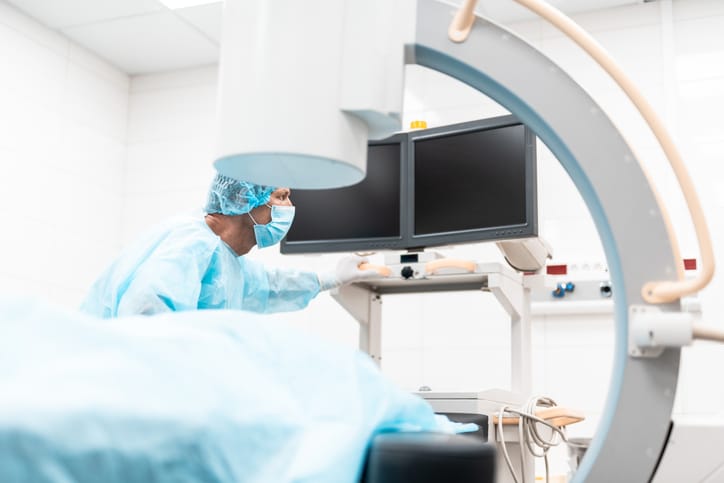
Stan’s surgeon used a C-arm imaging tool (pictured) to ensure a quick recovery and good outcome.
2 NEW HIPS IN 3 MONTHS
Stan’s surgeon would take a minimally invasive approach with both of his hip surgeries, replacing the joint from the front, an anterior approach in physicians’ terms.
“That allows us to spare the muscles by accessing the joint through an interval between the hip muscles,” Dr. Mairura says. “It’s a faster recovery with less post-operative pain.”
A day after his right hip was replaced with a new ceramic-coated ball and metal socket, Stan was on his feet walking the halls of Methodist Midlothian.
“I couldn’t believe it; you’re up the next day,” Stan says. “Of course, you’ve got to do the physical therapy, but after a few weeks, I was stronger than I was before all this stuff started. Then I asked Dr. Mairura, ‘How soon can we do the left hip?’”
The answer was March, just eight weeks after the first surgery. Once again, Dr. Mairura would put a novel technique to use: an advanced imaging tool known as a C-arm that gives surgeons a radiographic view of the joint.
“It’s a portable machine that allows me to fine-tune the accuracy of placing the prosthetic hip to ensure both legs are of equal length and components are accurately placed,” Dr. Mairura says. “Combining the anterior approach and the use of advanced tools like the C-arm adds up to a better outcome and faster recovery time for our patients.”
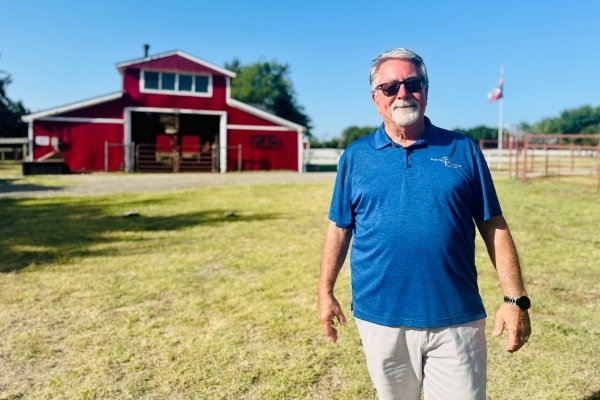
Back on his ranch, Stan is happy to get back to helping others heal from trauma.
COMPASSIONATE CARE
Stan admits that watching his health deteriorate in his 60s was a trial that tested his faith that he would ever recover fully.
“As a healthcare executive for 40 years, patience was not my best virtue,” he says. “But as a Christian, I know God has lessons for us if we’re willing to listen.”
Stan heard that good news loud and clear from the team at Methodist Midlothian.
“It was just tender loving, compassionate care,” he says, “and my entire experience was wonderful.”
Now that he’s recovered, Stan is back on his ranch, where he can return to the business of healing children, veterans, and first responders “mind, body, and spirit.”
“It’s been two years of just amazing results,” he says. “I’ve been restored.”

